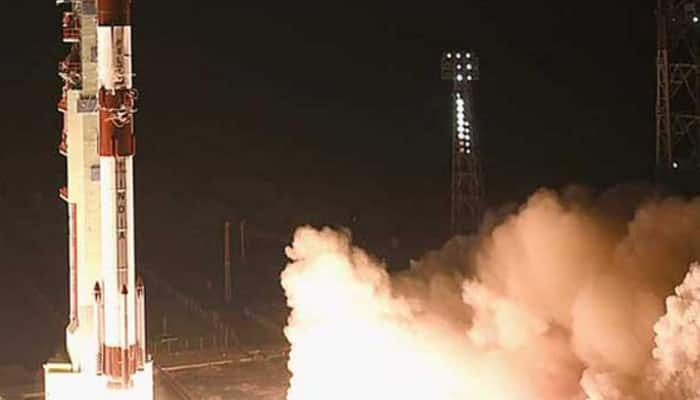New Delhi: The Indian Space Research Organisation (ISRO) on Thursday launched its last navigational satellite for the indigenously developed IRNSS system, completing the series. The satellite, designated IRNSS-1G, was successfully placed in orbit at an altitude of 488.9 km just over 20 minutes into the flight.
The IRNSS-1G lifted off on Thursday, April 28, at 12.50 p.m atop the country’s flagship PSLV rocket from the Satish Dhawan Space Centre in Sriharikota.
Here are some interesting facts you must know about the country's own navigation satellite:
- The Indian Regional Navigation Satellite System, or IRNSS in short, is an independent regional navigation satellite system being developed by India.
- It is designed to provide accurate real-time positioning and timing services over India and region extending to 1500 km around India.
- IRNSS will provide two types of services, namely - Standard Positioning Service (SPS), which is provided to all the users and Restricted Service (RS), which is an encrypted service provided only to the authorised users.
- Some applications of IRNSS are: terrestrial, aerial and marine navigation, disaster management, vehicle tracking and fleet management, integration with mobile phones, precise timing, mapping and geodetic data capture, terrestrial navigation aid for hikers and travellers, visual and voice navigation for drivers.
- The space segment consists of the IRNSS constellation of seven satellites – (IRNSS-1A, 1B, 1C, ID,1E, 1F and IG) all are now in orbit. And and by middle of 2016, India will have the full navigational satellite system in place.
- Out of seven, three satellites will be located in suitable orbital slots in the geostationary orbit and the remaining four will be located in geosynchronous orbits with the required inclination and equatorial crossings in two different planes.
- All the satellites will be visible at all times in the Indian region.
- It is believed that the IRNSS System will provide a position accuracy of better than 20 m in the primary service area.
- The IRNSS system is akin to the GPS of the US which has 24 satellites, Glonass of Russia (24 satellites), Galileo of Europe (27 satellites) and China's Beidou (35 satellites).
- The total cost of the project is expected to be ₹1420 crore (US$211 million).
(Source: ISRO)
















